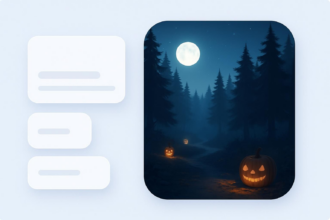Useful customer exit survey questions
- What was your main reason for leaving?
- How satisfied were you with our service or product?
- Did any features not meet your expectations?
- Did our service or product help you meet your goals?
- How frequently did you use our service or product?
- Was cost a factor in your decision to leave?
- Was the service or product easy to use?
- What could we have changed or done to keep your business?
- How likely are you to recommend our service to others?
- Did you run into technical issues?
Customers come and go; it’s an immutable rule of business. But that doesn’t mean you should accept customer churn at face value.
When a customer decides to leave, you should find out why. A customer exit survey is designed to do this. With analysis and an open mind, you can transform customer feedback into improved services, better customer retention, and a refined product.
A truly effective customer exit survey that helps you improve your retention rates needs to include useful survey questions. Read on to learn about the types of customer exit surveys, examples of questions you can use, and how you can easily build a useful customer exit survey with Jotform.
The importance of customer exit surveys
Customer exit survey questions uncover the how and why of customer churn. Asking a customer the right questions on their way out the door helps you identify customer behaviors, problems, and opportunities for improvement. Measuring customer experience can help you make it better.
There’s also a chance that a thoughtful exit survey and a commitment to taking grievances seriously may win a wayward customer back.
Types of customer exit surveys
Customer exit surveys vary depending on the timing of when you ask for feedback and the channel where you communicate with the customer.
Exit survey channels
- Onsite surveys appear directly on a business’s website, often in a popup or dialog box. For example, if a customer is canceling their subscription to a streaming service, while they’re navigating through the cancellation menu on the service’s website, they might see a window that asks them to answer a question or two about why they’re leaving.
- In-app surveys are built directly into a business’s app. This may encourage survey completion because customers won’t have to open a browser to fill out the survey.
- Email surveys are sent to customers’ email addresses. These exit surveys reach customers directly in their inboxes, giving them time to think about their answers and fill surveys out at their leisure.
Exit survey timing
- Before cancellation is finished. Sometimes, exit survey questions will be posed to customers in the middle of the cancellation or return process, before they confirm their decision. This timing can help customers consider their decision thoughtfully, by asking them to provide a reason either in their own words or by selecting from multiple-choice options. If they’re on the fence it may even prompt them to reconsider their decision. But it can also irritate customers — if someone definitely knows they want to cancel a service, they typically just want to get the cancellation over with. This timing might also result in less honest feedback — customers may just click the first option they see to proceed through the menu as quickly as possible.
- After cancellation is finished. This timing allows customers to complete a survey whenever works best for them, after they’ve already canceled a service or returned a product. It can encourage honest feedback because the survey is entirely optional, so customers who complete it are doing so because they genuinely want to provide feedback. You may get fewer answers, however, and by sending the survey after the fact, you’re letting go of an opportunity to encourage a customer to change their mind.
20 effective customer exit survey questions
To uncover the most actionable intel on customer churn, you need to ask insightful questions. We’ve gathered 20 customer exit survey questions here. We’ve also provided brief explanations for why each of these questions is useful.
- What was your main reason for leaving?
- This question gets to the point. The answers to this question can help you identify the most common reasons for churn.
- How satisfied were you with our service or product?
- This question gauges the overall customer satisfaction level and its link to churn.
- Did any features not meet your expectations?
- This question identifies problem features that may need attention.
- Do you feel you were made aware of all of the product’s features?
- This question can reveal potential communication or product education issues.
- Did you feel features were missing, and did this influence your decision?
- This question can uncover trends — if certain features are mentioned in multiple responses, consider them a wishlist.
- Did the service or product as a whole meet your initial expectations?
- This question can show a possible conflict between marketing and reality.
- Did our service or product help you meet your goals?
- This question allows you to find out whether you’re delivering on your promises.
- Did you experience issues with customer support?
- This question can reveal whether support issues came into play.
- How frequently did you use our service or product?
- This question can point to possible problems with engagement.
- Was cost a factor in your decision to leave?
- This question can indicate you may need to review pricing.
- Did you feel like you got the proper value from the service for the price?
- This question distinguishes between your pricing and the product’s perceived value.
- Was the service or product easy to use?
- This question tells you if usability or instructional materials might be a problem.
- How would you compare our product to alternatives on the market?
- This question gauges how customers feel about your competitors.
- What could we have changed or done to keep your business?
- This question can gather valuable insight and ideas.
- Would you consider using the service or product again in the future?
- This question lets you know whether you have another chance with this customer.
- How likely are you to recommend our service to others?
- This question zeroes in on the customer’s overall feeling toward your brand.
- Do you have any recommendations for how we can improve customer experience?
- This question gathers specific, actionable suggestions to improve your service.
- Did you run into technical issues?
- This question can indicate whether there are technical or quality issues that could be refined.
- Was our team, company, or customer support responsive to your needs?
- This question takes a temperature check on your customer service team.
- Would you be willing to discuss the feedback you provided?
- This question shows how strongly a customer holds their feelings and thoughts toward your product or brand and can help you gather in-depth data if a customer is willing to participate in a follow-up survey.
A powerful tool to help you conduct customer exit surveys
Conducting an exit survey can be daunting. There are many steps involved, from ideation and design to distribution and analysis. Fortunately, using a powerful online survey-building tool can help simplify each step in the process.
Jotform is feature-rich and user-friendly. Start with one of our 2,000-plus ready-to-use survey templates — like a client exit survey form, customer loss survey evaluation form, or customer churn survey — or build a new survey from scratch. Jotform’s drag-and-drop Form Builder lets you tailor your survey to suit your needs — customize layout, colors and fonts, question types, survey length, and more.
You can even make your survey interactive by using conditional logic to ask specific follow-up questions based on certain customer answers. Share your survey over email, website embed, link, social media, or QR code. Surveys can be filled out on any device. Data can even be saved offline by using the Jotform Mobile Forms app.
Jotform also helps you analyze survey responses. Jotform Tables allows you to track and manage responses in an automatically populated database. Jotform Report Builder automatically generates customizable visual reports, letting you instantly identify response trends.
Turn goodbye into growth
Customer churn can pinch your business; there’s no way around it. But finding and implementing effective customer exit survey questions will help you address concerns and provide you with vital, actionable insights for retaining existing customers.
The right questions, combined with the best tools, can turn a customer goodbye into an opportunity to learn, refine, and grow. Start creating your customer exit survey with Jotform today.
Photo by Los Muertos Crew






































































































Send Comment: